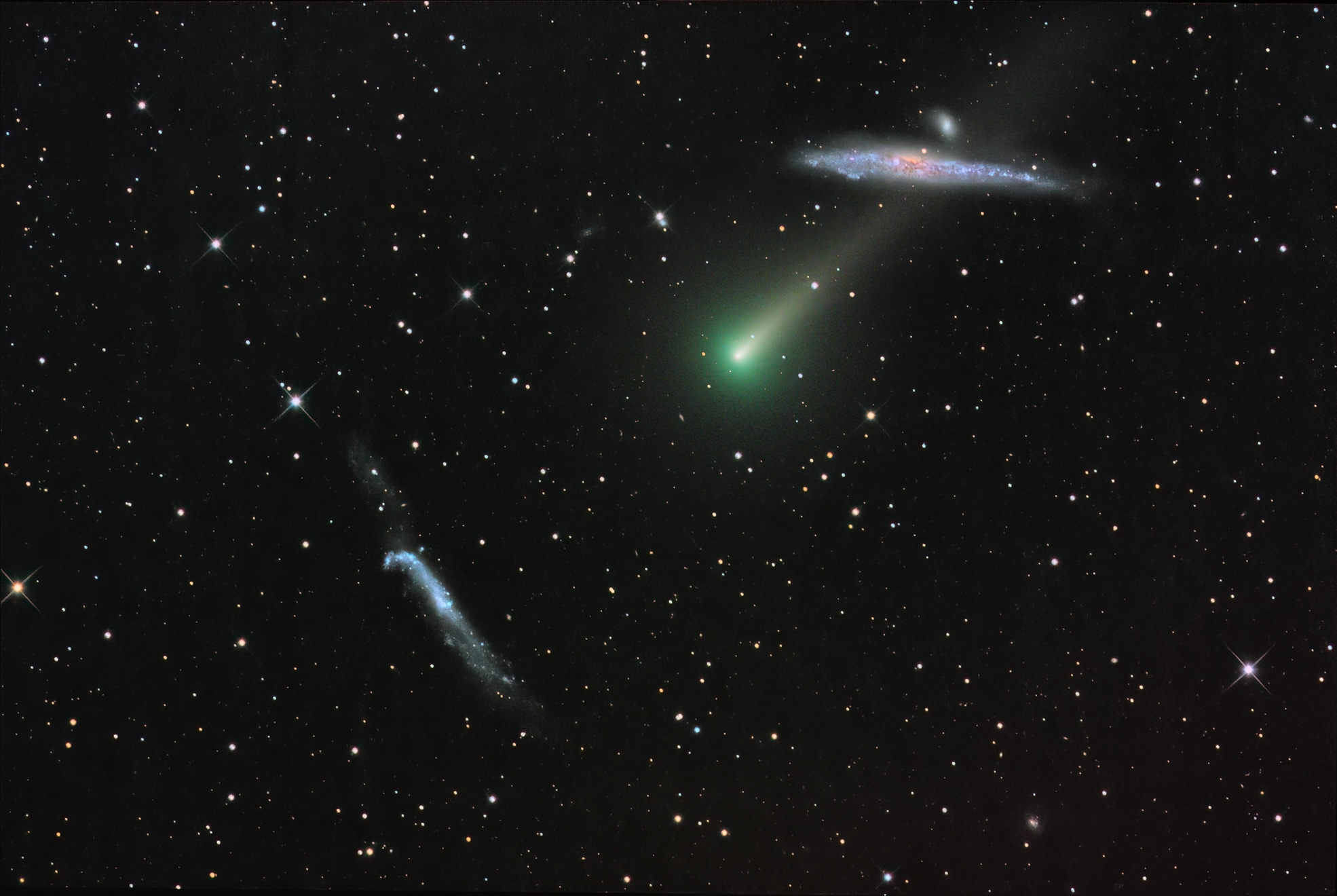As the holidays unfold, we can be certain that a multitude of shoppers are weighing the decision of putting a telescope under the tree for a loved one. As seasoned amateur astronomers, we often try to provide advice on potential purchases to friends and strangers alike on social media. Increasingly there are good resources made available by the amateur community on what is a good starter scope for the newbie in hopes of avoiding a “hobby killer.”
Unfortunately, the seed of a budding amateur astronomer can be poisoned even more thoroughly than any poor telescope long before the instrument finds its way into their hands. It comes about when they develop expectations that are impossible to meet. It’s often said in business that to “under promise and over deliver” leads to a happy customer, but sadly that axiom is often turned on its head when it comes to starting off exploring the heavens.
 |
| APOD from 12/03/2021 |
Don’t take umbrage, but one of the primary offenders is the experienced amateur astronomer amplified by social media. While it is certainly not done by intent, posting those amazing pictures of what’s up there readily kindles a desire to replicate that. Some folks will also assume that they can actually see that object with their eye, having no understanding of the power of a CMOS chip in gathering up photons. The photo does not come with a disclaimer of how many years the author has been at this, nor the investment they have sunk into their equipment. The uninitiated will assume that the same technological magic they find in their phone will make creating their own picture of the Cygnus Loop a breeze (or at least doable.)
The other, and in my opinion bigger, contributor to inflated expectations is the media. In the good old days, one had a better sense of what sources of news were reputable. If the tabloid in the supermarket checkout line had 72pt type headline declaring “Super Blood Moon to Appear!” you were suspicious. If Sky & Telescope had “Best Lunar Eclipse of Year” you knew you could bank on it. But now, thanks to the digital revolution and lack of standards, anyone can be an author (including your humble blogger) without benefit of an editor. That can be a good thing in making voices heard, but it also opens the door to hyperbole in the pursuit of new content and clicks. You need look no further than the hubbub over Comet Leonard this month. Yes, it has technically been a naked eye object, but only if you were observing from a dark sky venue. For the vast majority of readers Comet Leonard is not going to be visible. I personally could not even catch it with 7x50 binoculars in the pre-dawn sky a couple weeks ago given the light pollution in Towson. |
| Is this even an actual image of Leonard?? |
What to do? One of the best things is to afford the curious a chance to actually look through a telescope in a suburban setting. HAL does a great job of this and should be commended for their persistent efforts to host star party events for the public. But you can do some sidewalk astronomy right from your own sidewalk. Maybe instead of hiding out in the darker back yard put the rig out in front of the house shortly after dusk as the neighbors are taking fido for his walk. Let them take a peek at the Orion Nebula or M15.
You can also offer a (gentle) reality check in the comment sections of the social media posts that are overselling a celestial event. You can still be upbeat about the occurrence but let people know if certain equipment or experience is going to be needed. Inform them that that total solar eclipse this month is indeed an awesome sight to behold, but you’ll need to be in Antarctica to have a ringside seat.
Finally, if you are on social media, consider posting some of your images and experiences along with a few words about what went into achieving it. When you find a good article about getting started in amateur astronomy, share it. If you see someone starting off in the hobby, offer words of encouragement. You won’t be able to dispel every inflated claim made by astronomical B. T. Barnums, but if you establish your cred as a bona fide amateur astronomer, that person who is wondering if they might enjoy astronomy as a hobby will seek you out – and they will be in good hands.











